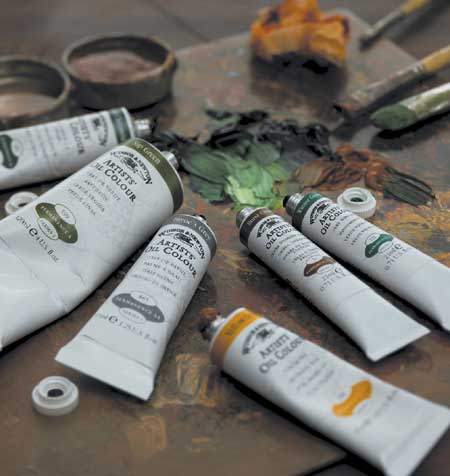|

Winsor & Newton Artists' Oil Colour owes its reputation for supreme quality to
the careful selection of the very finest pigments. By exercising maximum quality
control throughout all stages of manufacture, selecting the most suitable drying
oils and method of pigment dispersion, the unique individual qualities of the
colours are preserved. To produce colours of reliable consistency and a high
standard of colour matching demands a combination of the traditional crafts of
the artists' colourmen and modern colour technology skills.
The 120 colours in this range each contain the maximum pigment content
consistent with good handling qualities, and so achieve the optimum tinting
strength when reduced with white. The Winsor & Newton range of Artists' Oil
Colour is unmatched for purity, quality and reliability, a success which is
reflected in its worldwide reputation amongst professional artists. Winton is
the standard artist range.
|
|
Titanium White (Opaque) Artist Oil Colour 200ml tubes
Special Offer
Winsor & Newton Artists' Oil Colour owes its reputation for supreme
quality to the careful selection of the very finest pigments. By
exercising maximum quality control throughout all stages of
manufacture, selecting the most suitable drying oils and method of
pigment dispersion, the unique individual qualities of the colours
are preserved. To produce colours of reliable consistency and a high
standard of colour matching demands a combination of the traditional
crafts of the artists' colourmen and modern colour technology
skills.
The 120 colours in this range each contain the
maximum pigment content consistent with good handling qualities, and
so achieve the optimum tinting strength when reduced with white.
The Winsor & Newton range of Artists' Oil Colour is unmatched for
purity, quality and reliability, a success which is reflected in its
worldwide reputation amongst professional artists.
|
|



